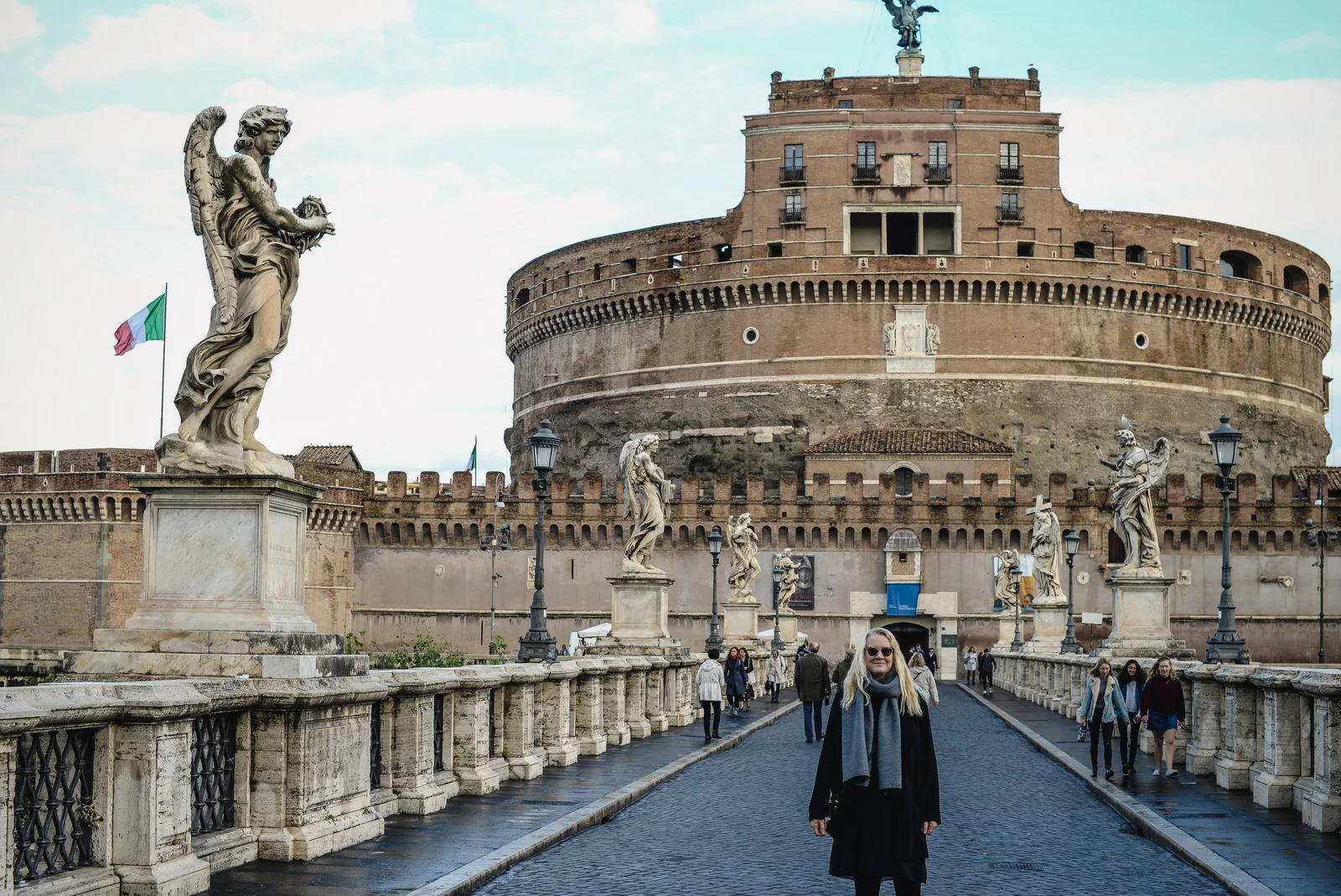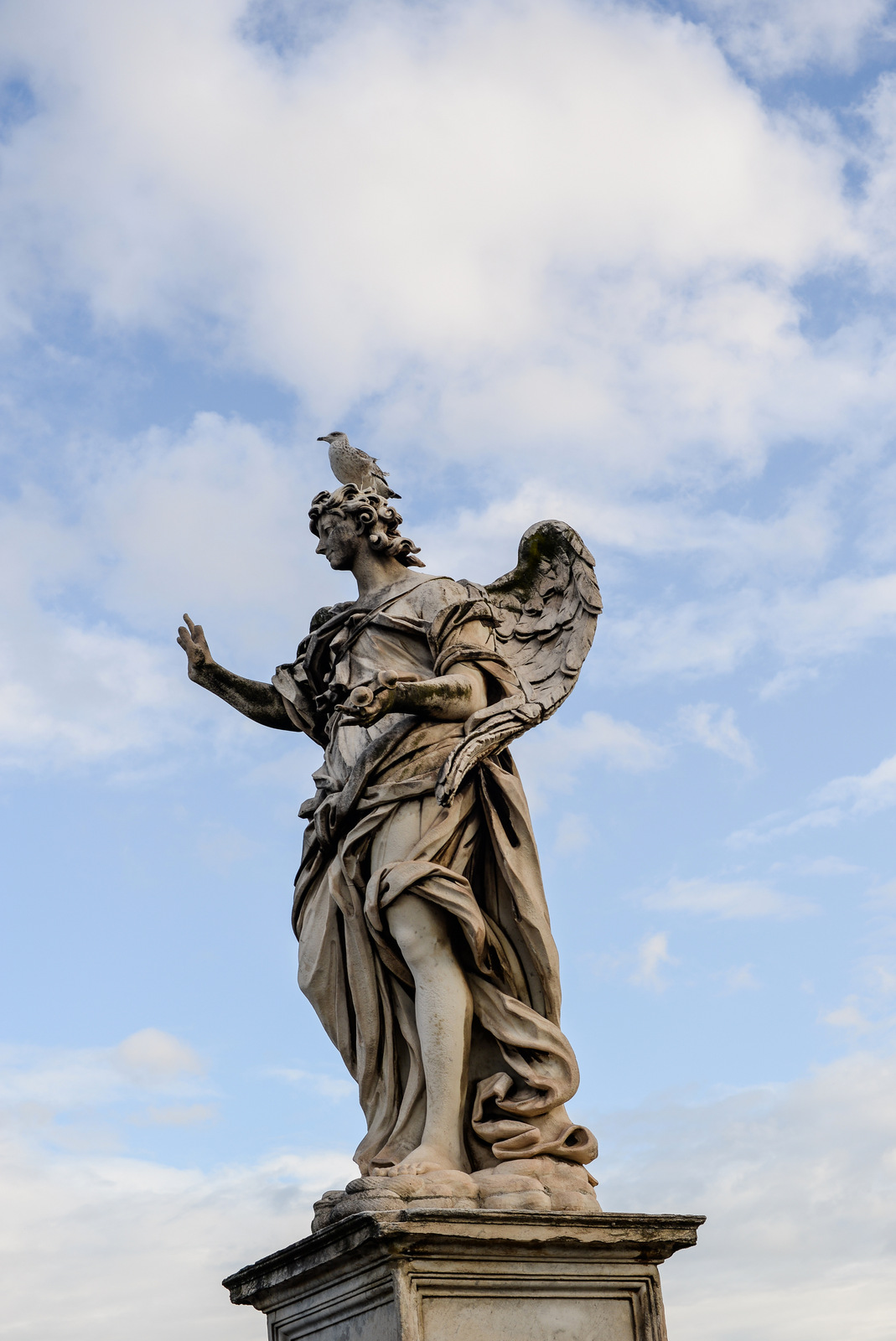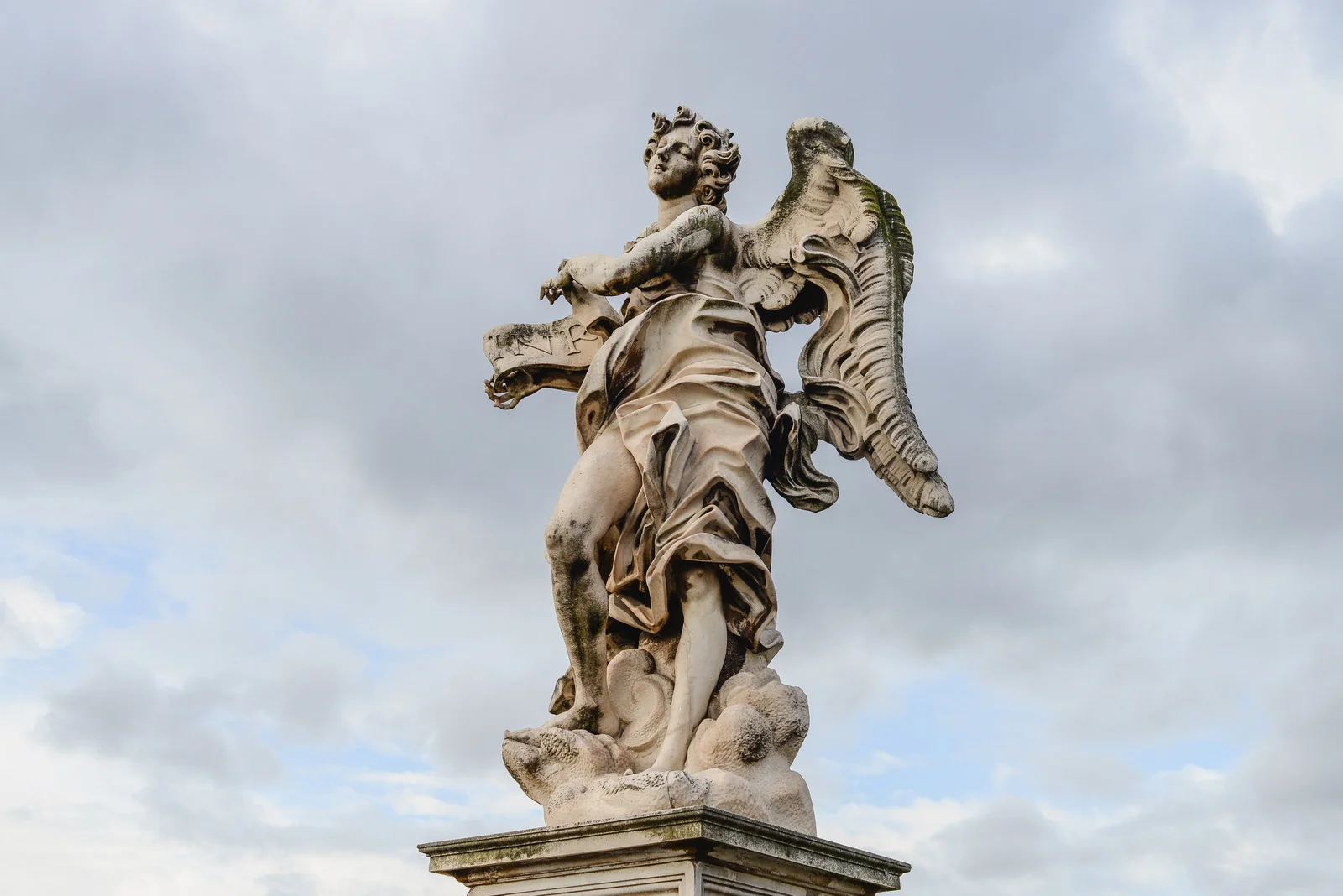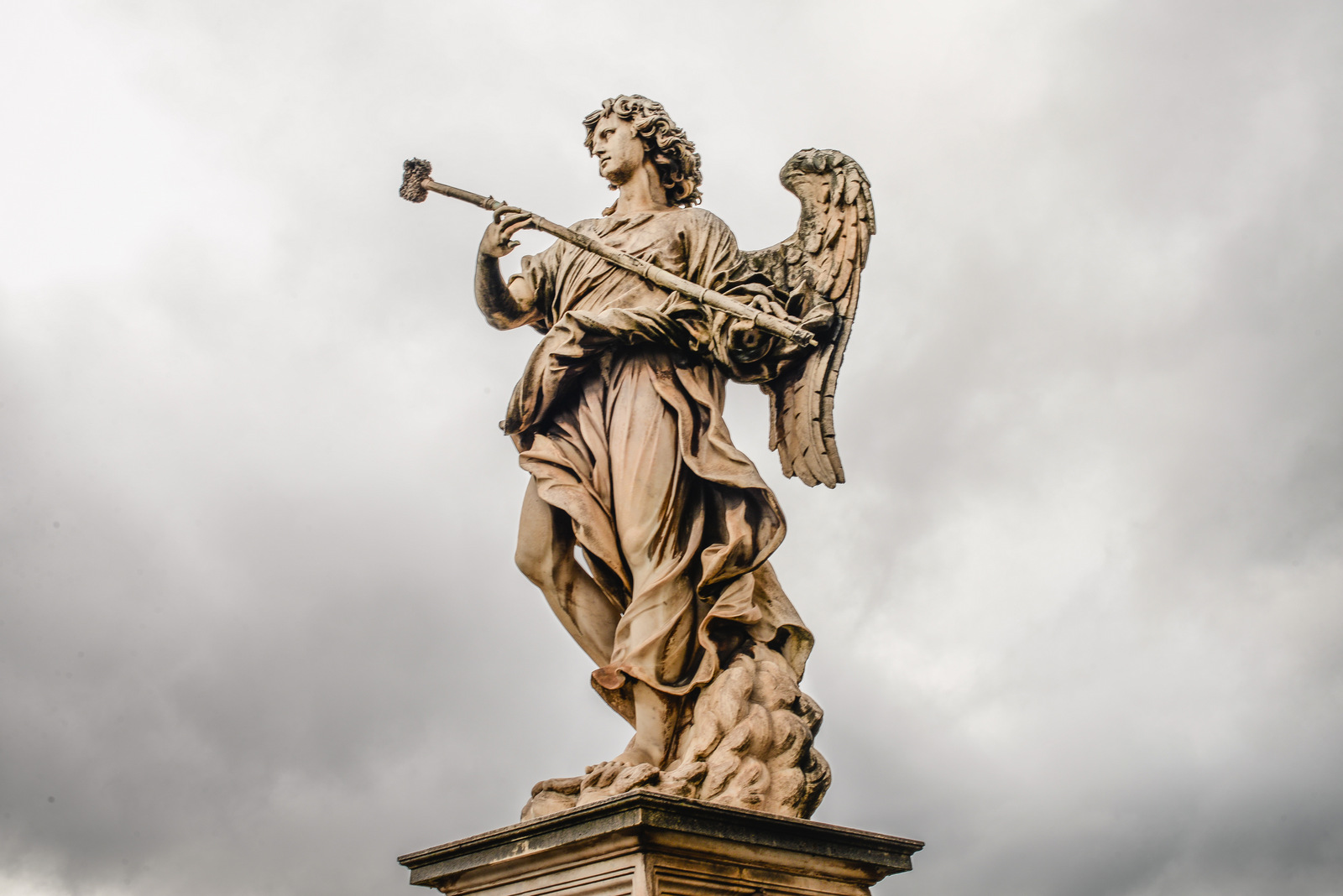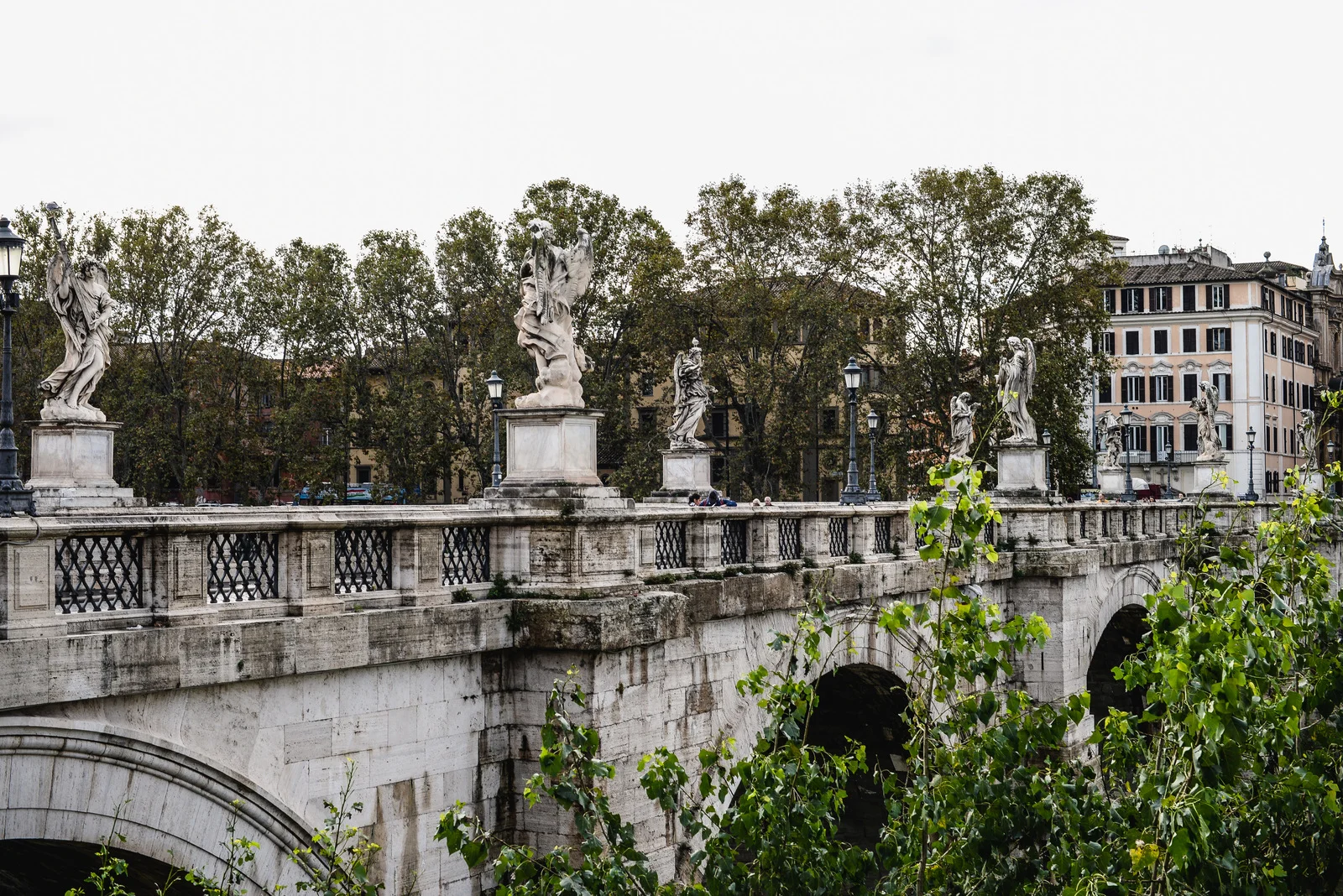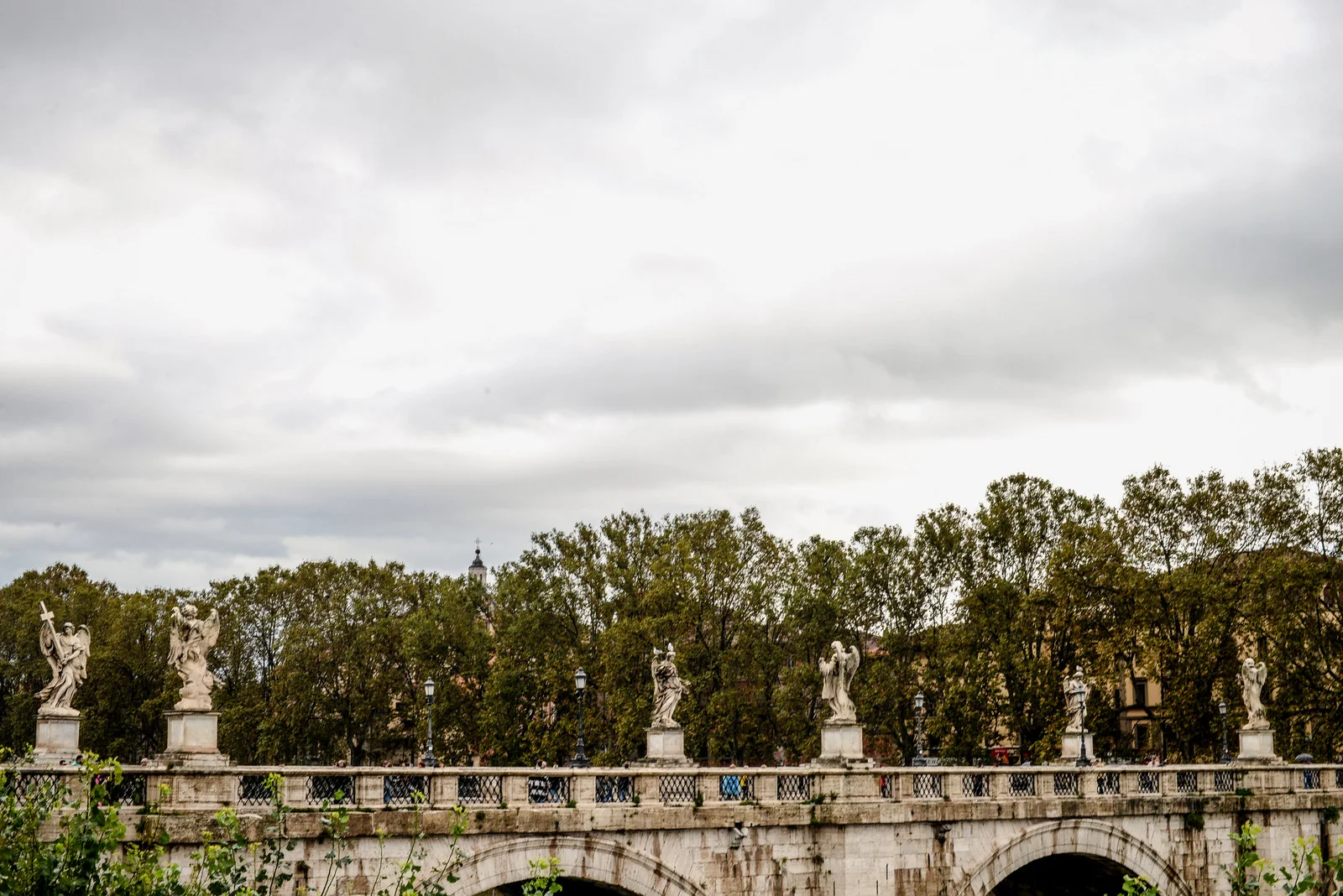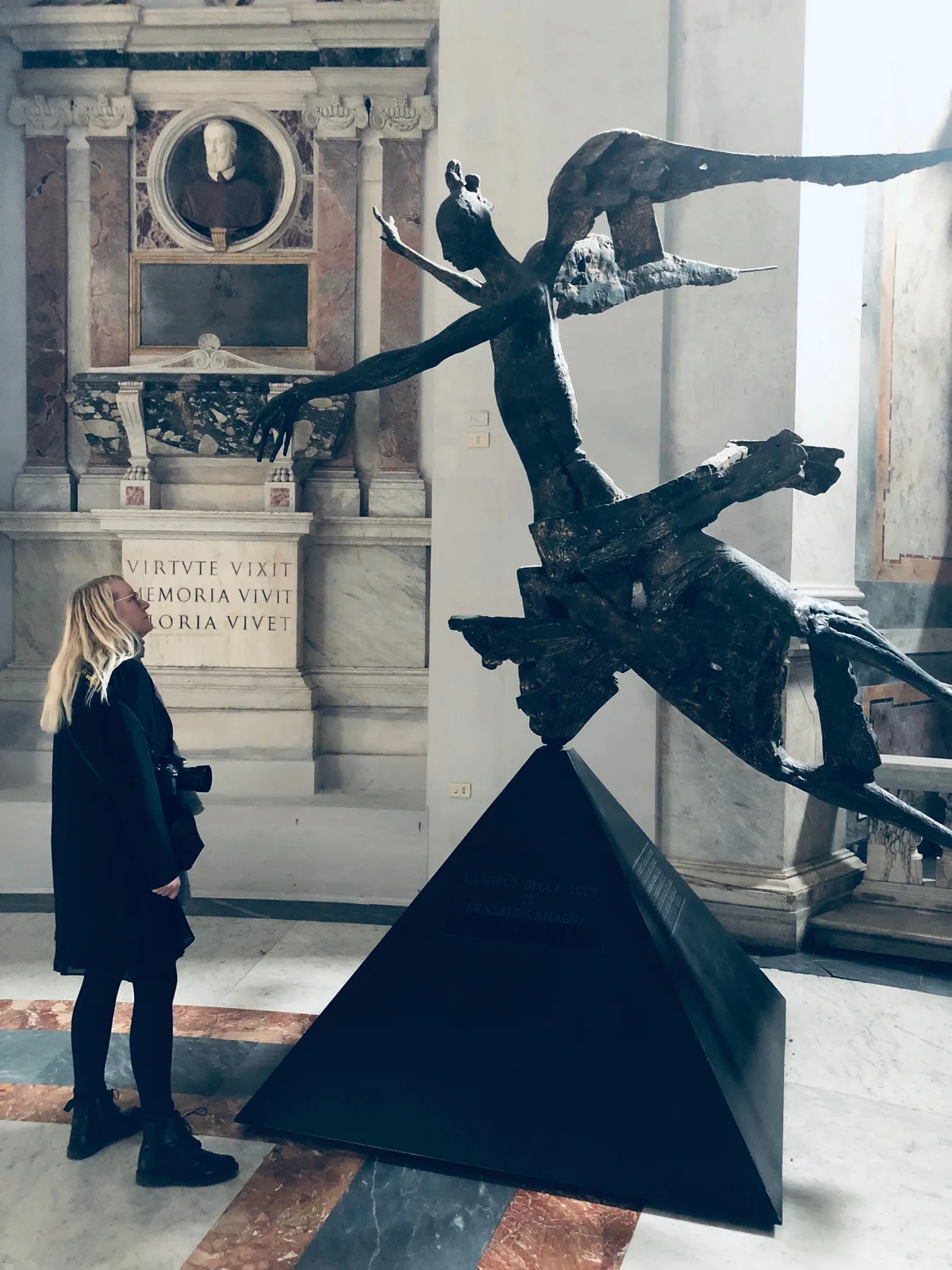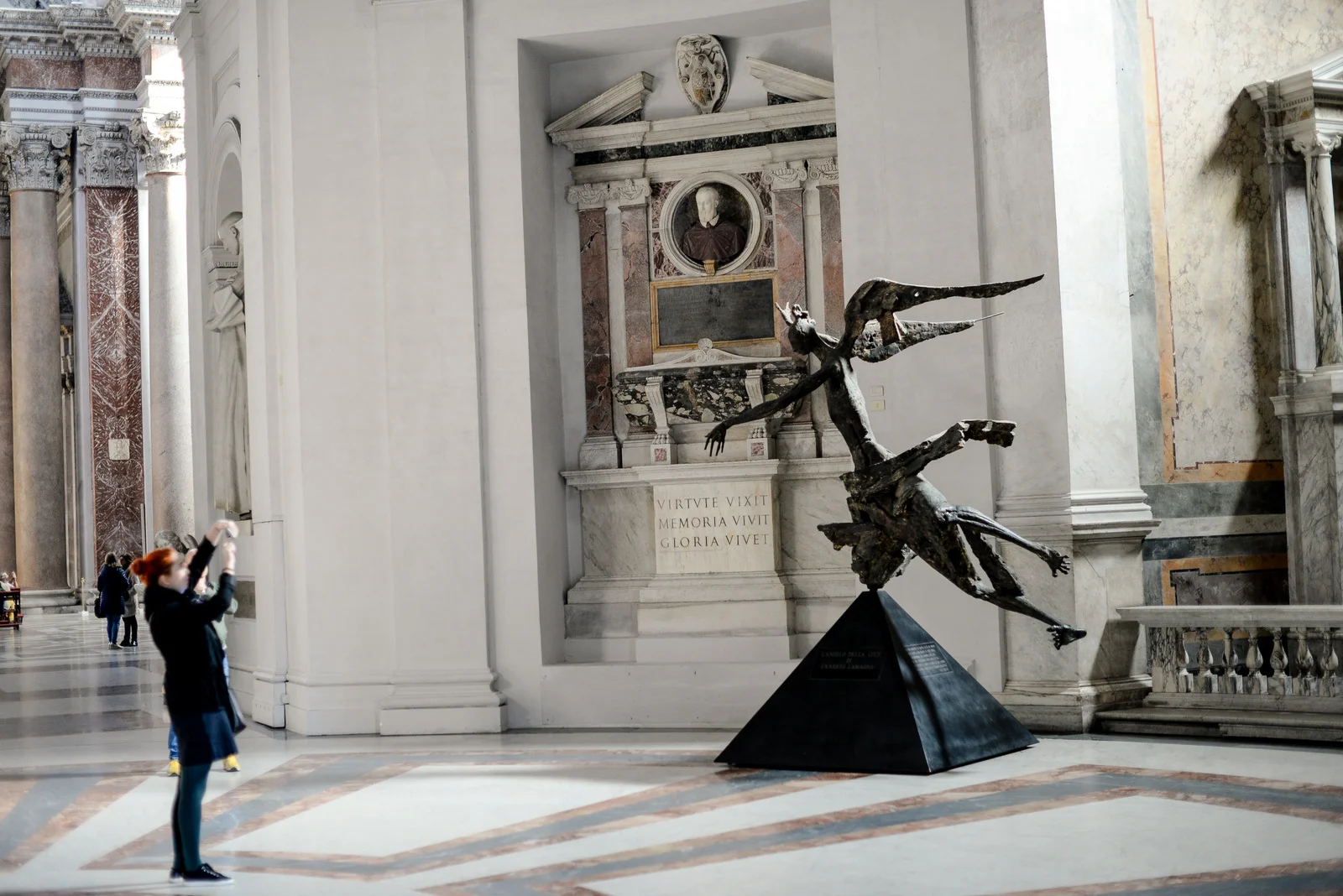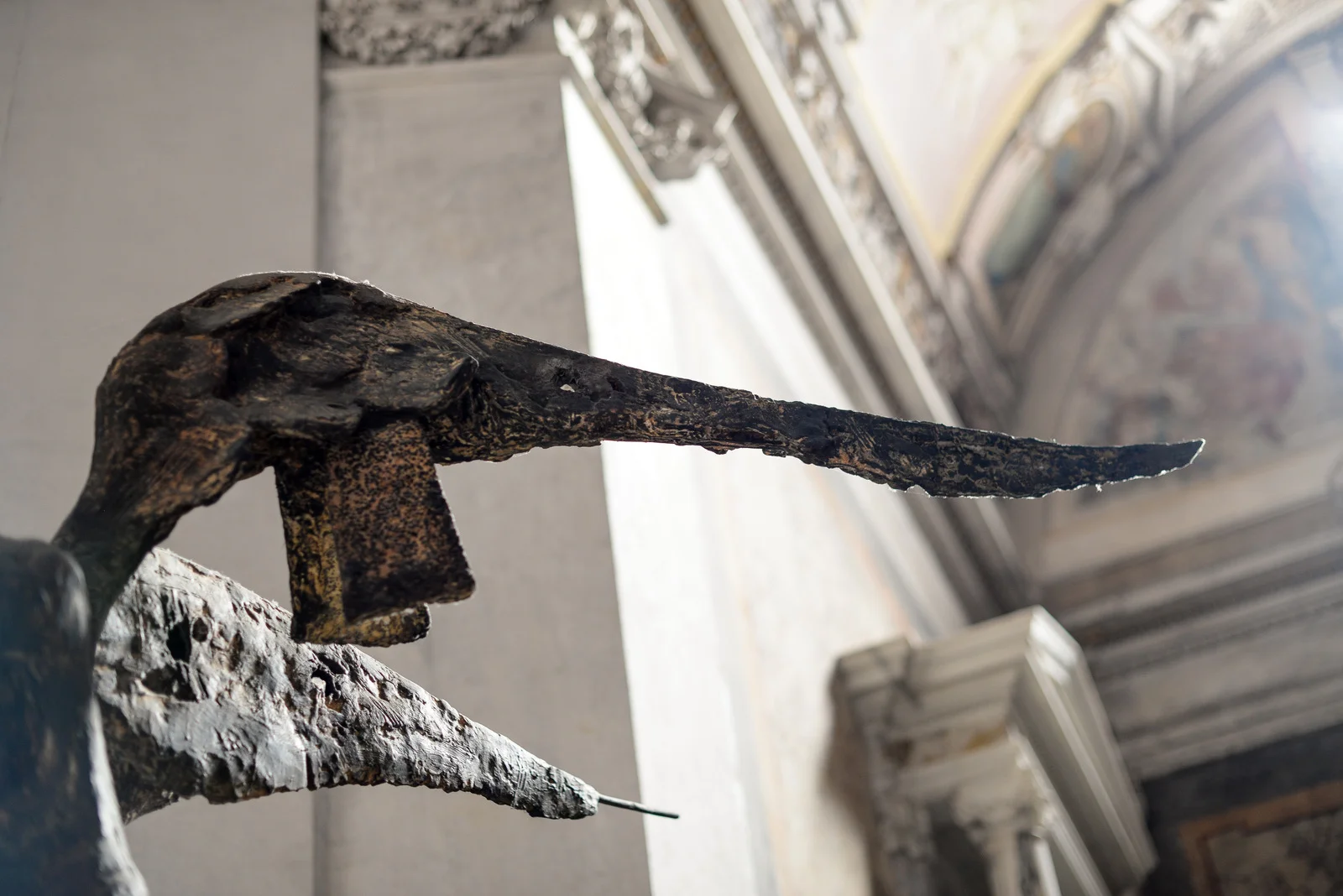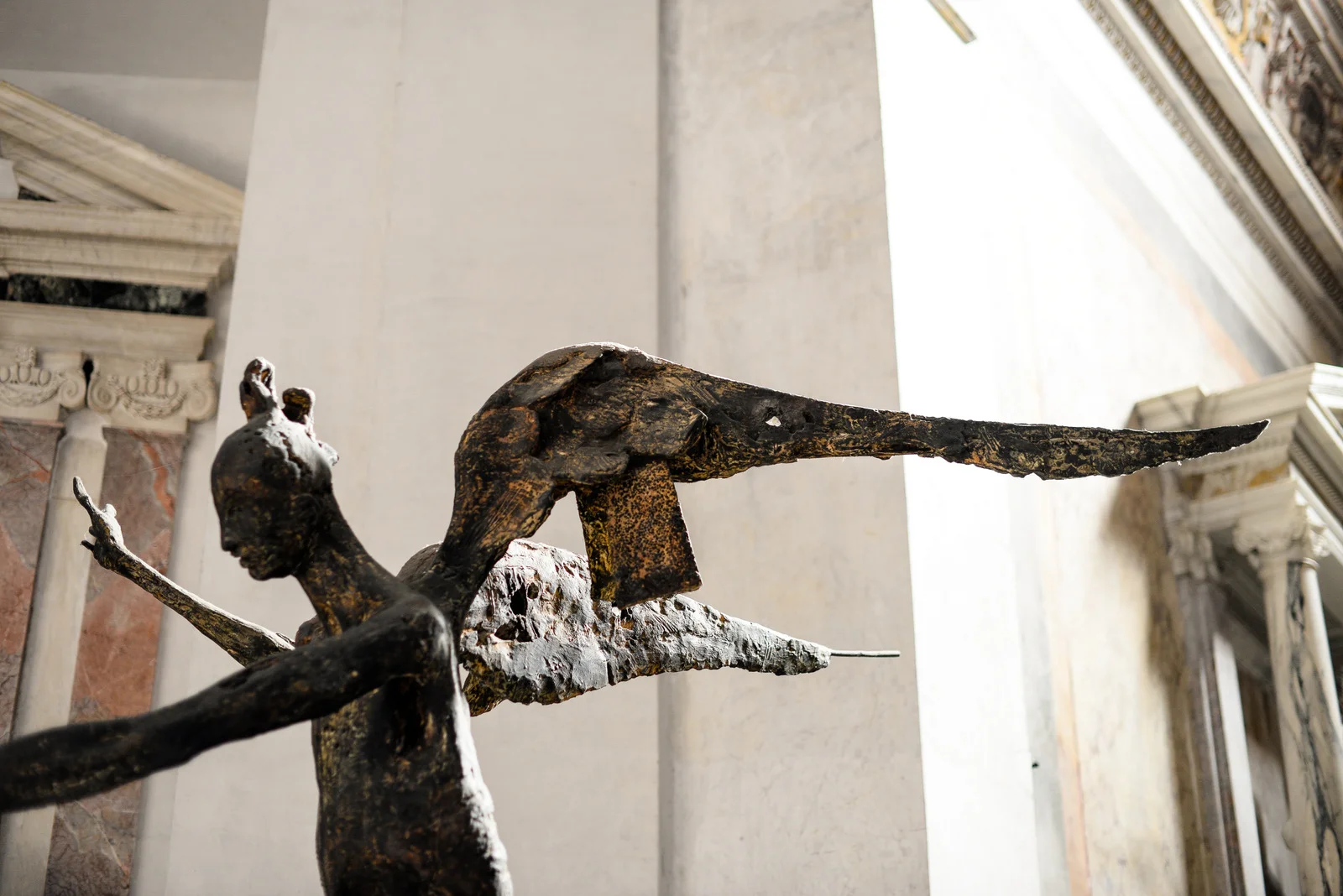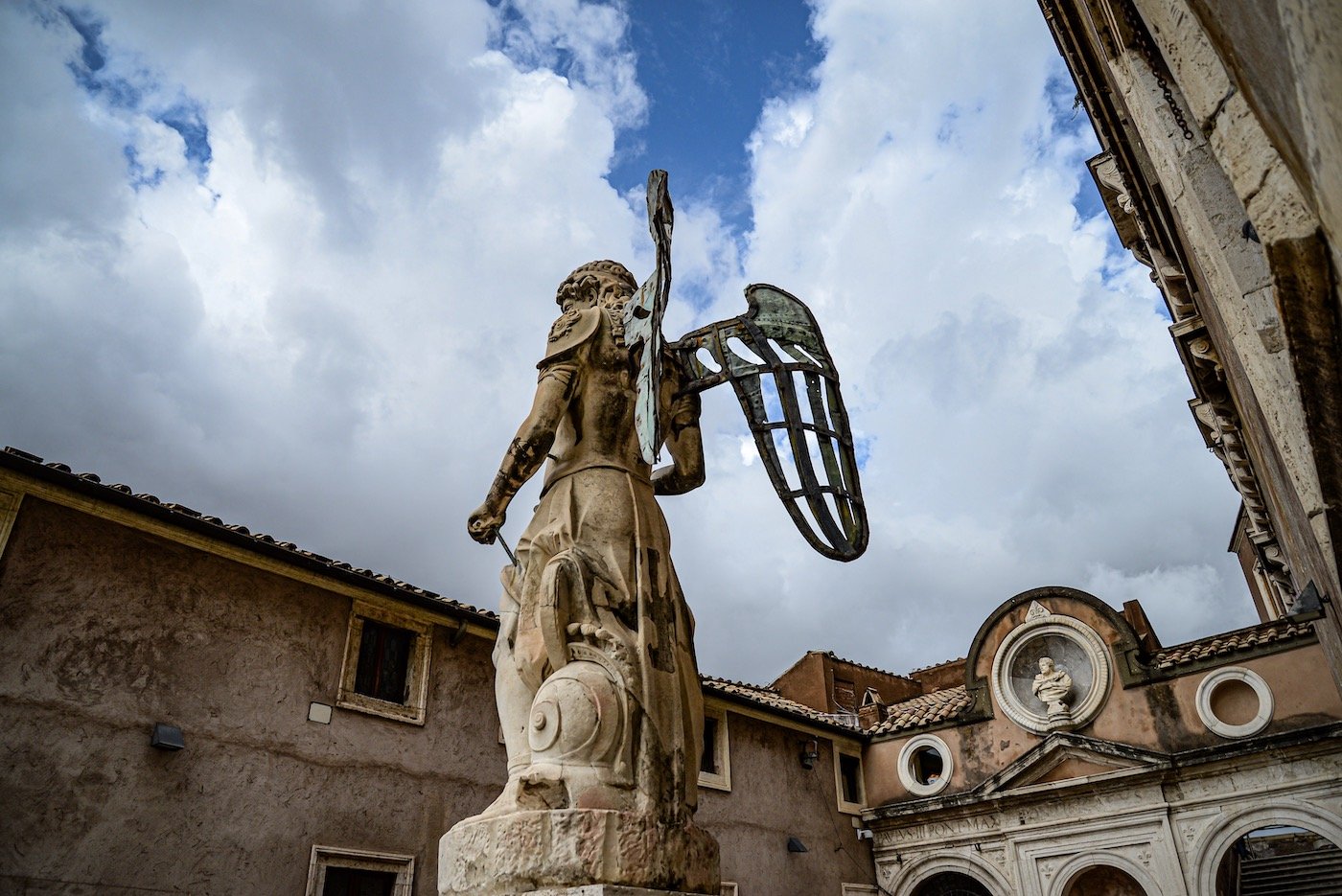5 Poems About Angels
I’ve wanted to write a book about angels for a very long time, even before I read “A Very Old Man with Enormous Wings” by Gabriel Garcia Marquez. But reading it solidified this idea. Naturally, other people have beaten me to retellings of this story. I gave up the idea entirely for quite some time before realizing that 100 people could write something based on the story and they would all be different. In the end, the novel I’m writing has very little to do with the Marquez story, though it wouldn’t exist without it either.
I’ve been thinking about and writing about angels for some time now. I’ve been collecting angels, too. Poems, of course. And when we went to Rome last November, they found me, and I found them. One trips over angels, in Rome, as it turns out. We walked over the Ponte Sant’Angelo as we did on our honeymoon 25 years previous. It’s easier to google the names of the sculptors and what each angel represents these days.
So, next are five poems about angels, all are different, which is the case with angels. Interspersed you’ll find some of the photos I took on the bridge of the angels. It was our first day in Rome, and we were jet lagged and a bit damp as it was raining off and on. I’m not sure I was quite awake enough, but this is how it was.
1. On Angels by Czeslaw Milosz
All was taken away from you: white dresses,
wings, even existence.
Yet I believe in you,
messengers.
There, where the world is turned inside out,
a heavy fabric embroidered with stars and beasts,
you stroll, inspecting the trustworthy seams.
Short is your stay here:
now and then at a matinal hour, if the sky is clear,
in a melody repeated by a bird,
or in the smell of apples at close of day
when the light makes the orchards magic.
They say somebody has invented you
but to me this does not sound convincing
for the humans invented themselves as well.
The voice — no doubt it is a valid proof,
as it can belong only to radiant creatures,
weightless and winged (after all, why not?),
girdled with the lightening.
I have heard that voice many a time when asleep
and, what is strange, I understood more or less
an order or an appeal in an unearthly tongue:
day draw near
another one
do what you can.
{source}
2. At Twilight an Angel by Mary Oliver
At twilight an angel was standing in the garden. It is true, the wings are very beautiful. Even more spectacular, in a quieter way, is the light that shines out of the angel’s body. Not the cold light of the glow worm, but the softer light of a candle, or more exactly the light of a candle as it is seen through a window and, therefore, is not only itself but the light and a kind of veil together, which in fact does not double the mystery but multiplies it. The angel was looking into the trees, but mostly it was just standing there. In a strange and inexplicable way, it seemed as familiar to me as the trees themselves. I was glad it was there, but didn’t expect more – I mean I didn’t expect the angel to stir from its place anymore than I expected the trees to start walking around. The trees and the angel, they were each just what they were.
And yet, I am not quite telling the truth when I talk of such contentment. Once I woke in the night and was exasperated entirely, for an angel in those days, and nights too, had come into our house – had come that far – and hovered there. Why doesn’t the angel help me, I thought, as I exhausted myself doing what had to be done. But the angel did not. It was, as I said, like a light behind a veil, as though Heaven’s purpose could not trade itself for the business, even the grief, of the Earth. Which is just one more mystery and, finally, the one I think about most. What, then, is their earnest business? What do the flames mean that spark from under their feet? Was I wrong, did the angel in the dark offer tenderness, and did I miss it? And what was that other angel doing in the garden, standing there straight-limbed and substantial, as though the trees were singing to him, or he was singing to the leaves, or all of them were stitching a music together for something or someone, and no time no precious time to think of anything else.
{source}
3. About Angels And About Trees by Mary Oliver
Where do angels
fly in the firmament,
and how many can dance
on the head of a pin?
Well, I don’t care
about that pin dance,
what I know is that
they rest, sometimes,
in the tops of the trees
and you can see them,
or almost see them,
or, anyway, think: what a
wonderful idea.
I have lost as you and
others have possibly lost a
beloved one,
and wonder, where are they now?
The trees, anyway, are
miraculous, full of
angels (ideas); even
empty they are a
good place to look, to put
the heart at rest—all those
leaves breathing the air, so
peaceful and diligent, and certainly
ready to be
the resting place of
strange, winged creatures
that we, in this world, have loved.
4. Women Who Love Angels by Judith Ortiz Cofer
They are thin
and rarely marry, living out
their long lives
in spacious rooms, French doors
giving view to formal gardens
where aromatic flowers
grow in profusion.
They play their pianos
in the late afternoon
tilting their heads
at a gracious angle
as if listening
to notes pitched above
the human range.
Age makes them translucent;
each palpitation of their hearts
visible at temple or neck.
When they die, it’s in their sleep,
their spirits shaking gently loose
from a hostess too well bred
to protest.
{source}
5. Questions About Angels by Billy Collins
Of all the questions you might want to ask
about angels, the only one you ever hear
is how many can dance on the head of a pin.
No curiosity about how they pass the eternal time
besides circling the Throne chanting in Latin
or delivering a crust of bread to a hermit on earth
or guiding a boy and girl across a rickety wooden bridge.
Do they fly through God's body and come out singing?
Do they swing like children from the hinges
of the spirit world saying their names backwards and forwards?
Do they sit alone in little gardens changing colors?
What about their sleeping habits, the fabric of their robes,
their diet of unfiltered divine light?
What goes on inside their luminous heads? Is there a wall
these tall presences can look over and see hell?
If an angel fell off a cloud, would he leave a hole
in a river and would the hole float along endlessly
filled with the silent letters of every angelic word?
If an angel delivered the mail, would he arrive
in a blinding rush of wings or would he just assume
the appearance of the regular mailman and
whistle up the driveway reading the postcards?
No, the medieval theologians control the court.
The only question you ever hear is about
the little dance floor on the head of a pin
where halos are meant to converge and drift invisibly.
It is designed to make us think in millions,
billions, to make us run out of numbers and collapse
into infinity, but perhaps the answer is simply one:
one female angel dancing alone in her stocking feet,
a small jazz combo working in the background.
She sways like a branch in the wind, her beautiful
eyes closed, and the tall thin bassist leans over
to glance at his watch because she has been dancing
forever, and now it is very late, even for musicians.
{source}
And then, on our last day in Rome, we visited the Santa Maria degli Angeli e dei Martiri, constructed in the 16th century based on a design by Michelangelo. It’s a fascinating church for many reasons, including the meridian line and the doors by Igor Mitoraj. But what I fell in love with was this statue by Ernesto Lamagna, “L’Angelo della Luce” or “Angel of Light.”
It’s not that any of these angels will be in my novel. But this one enters my dreams. I’m haunted by the angels of Rome, in good ways. One steeps oneself in what one sees and experiences, and in one’s art it becomes something else entirely.

